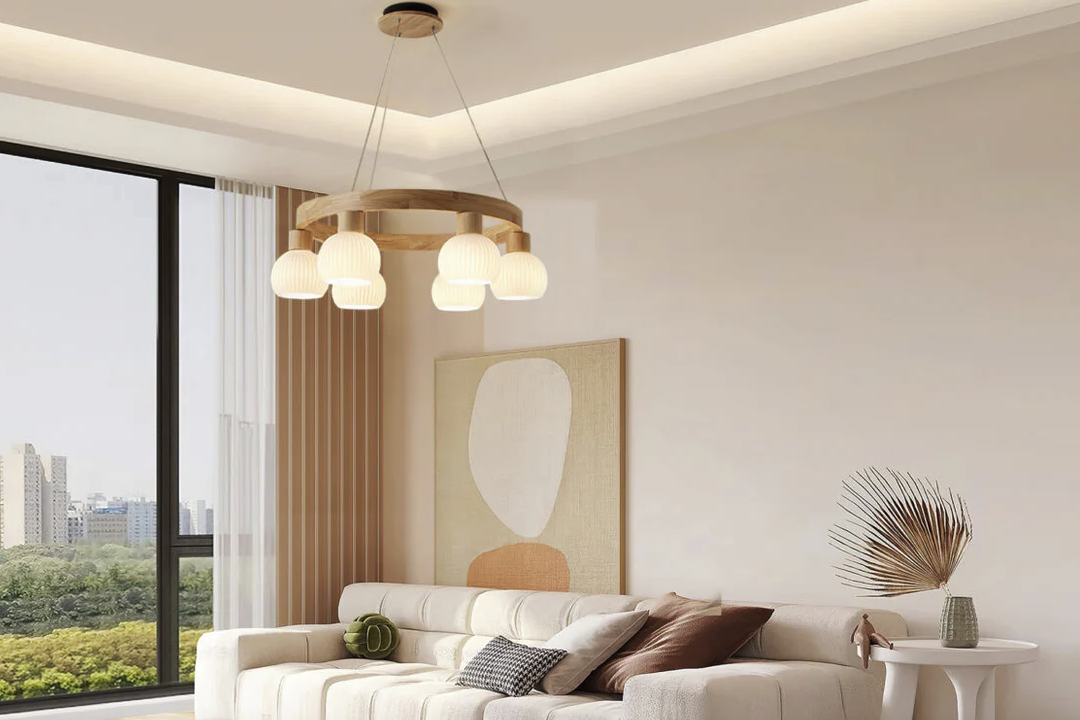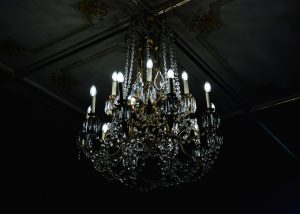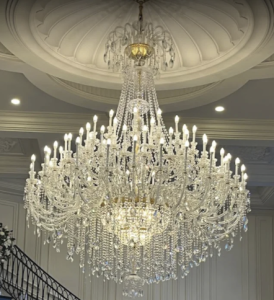
Choosing the Perfect Ceiling Light for Your Living Room
Ceiling lights come in a variety of styles and designs Vidilion, each serving a different purpose and aesthetic. One of the most common types of ceiling lights is the flush mount, which is installed directly onto the ceiling and provides a seamless look. This type of light is ideal for low ceilings and small spaces. Another popular option is the semi-flush mount, which hangs slightly lower from the ceiling and offers a more decorative touch. Chandeliers are also a popular choice for larger rooms and formal spaces, adding a touch of elegance and sophistication. Pendant lights are another versatile option, as they can be used individually or in a group to create a dramatic effect. Track lighting is a modern and flexible option that allows you to direct light to specific areas of the room. Finally, recessed lighting is a sleek and minimalist option that is installed into the ceiling, providing a clean and unobtrusive look.
In addition to the different styles of ceiling lights, there are also various types of light sources to consider. LED lights are energy-efficient and long-lasting, making them a popular choice for many homeowners. Incandescent lights provide a warm and inviting glow, while halogen lights offer bright and focused illumination. Fluorescent lights are often used in commercial settings for their energy efficiency and long lifespan. Each type of ceiling light offers its own unique benefits and considerations, so it’s important to understand the different options available before making a decision.
Factors to Consider When Choosing a Ceiling Light
When choosing a ceiling light for your living room, there are several factors to consider to ensure that you select the right option for your space. The first consideration is the size of the room, as this will determine the type and size of the ceiling light that will work best. For larger rooms, a chandelier or pendant lights may be more suitable, while smaller rooms may benefit from flush mount or semi-flush mount options. The height of the ceiling is also an important factor to consider, as it will determine how low the light fixture can hang without obstructing the space.
The style of your living room should also be taken into account when choosing a ceiling light. If you have a modern and minimalist space, recessed lighting or track lighting may be the best option to maintain a clean and uncluttered look. For traditional or formal living rooms, a chandelier or pendant lights can add a touch of elegance and sophistication. Additionally, the functionality of the ceiling light should be considered, as different types of lights offer different levels of illumination and flexibility. Finally, it’s important to consider your budget when choosing a ceiling light, as there are options available at various price points to accommodate different financial constraints.
Matching the Style of Your Living Room
When it comes to choosing a ceiling light for your living room, it’s important to consider the overall style and decor of the space. The right ceiling light can enhance the aesthetic of your living room and tie together the design elements for a cohesive look. For modern and contemporary living rooms, sleek and minimalist options such as recessed lighting or track lighting can complement the clean lines and simplicity of the space. These types of lights offer a subtle and unobtrusive look that won’t overpower the room’s design.
On the other hand, traditional or formal living rooms may benefit from more decorative options such as chandeliers or pendant lights. These types of ceiling lights can add a touch of elegance and sophistication to the space, creating a focal point that enhances the overall ambiance. Additionally, for eclectic or bohemian-style living rooms, mixing and matching different types of ceiling lights can create an eclectic and unique look that reflects your personal style. By considering the style of your living room when choosing a ceiling light, you can ensure that the fixture complements the space and enhances its overall design.
Determining the Right Size and Height for Your Ceiling Light
The size and height of your living room will play a significant role in determining the right size and height for your ceiling light. For larger rooms with high ceilings, a chandelier or pendant lights can make a bold statement and fill the space effectively. These types of ceiling lights can hang lower from the ceiling without obstructing the room, creating a dramatic effect that complements the grandeur of the space. On the other hand, smaller rooms with lower ceilings may benefit from flush mount or semi-flush mount options that provide adequate illumination without overwhelming the space.
It’s important to consider the scale of your living room when choosing a ceiling light, as an oversized fixture can make the room feel cramped and crowded, while an undersized fixture may not provide enough illumination or impact. Additionally, the height at which the ceiling light hangs is crucial to ensure that it doesn’t obstruct any walking paths or visual lines in the room. As a general rule, a ceiling light should hang at least 7 feet above the floor to provide ample clearance and avoid any potential hazards. By carefully considering the size and height of your living room, you can select a ceiling light that complements the space and enhances its overall functionality.
Considering the Functionality of the Ceiling Light
In addition to aesthetics, it’s important to consider the functionality of the ceiling light when choosing a fixture for your living room. Different types of ceiling lights offer varying levels of illumination and flexibility, so it’s important to select an option that meets your specific needs. For example, if your living room serves as a multi-functional space for entertaining, relaxing, and working, you may want to consider adjustable track lighting that allows you to direct light to different areas as needed. This type of ceiling light offers versatility and control over the illumination in your living room.
On the other hand, if your living room is primarily used for relaxation and entertainment, ambient lighting options such as chandeliers or pendant lights can create a warm and inviting atmosphere. These types of ceiling lights provide general illumination that enhances the overall ambiance of the space without being too harsh or bright. Additionally, if you have specific areas in your living room that require focused illumination, such as reading nooks or artwork displays, task lighting options such as recessed lighting or spotlights can provide targeted light where it’s needed most. By considering the functionality of your living room when choosing a ceiling light, you can ensure that the fixture meets your specific lighting needs.
Selecting the Right Bulb for Your Ceiling Light

Once you’ve chosen the type and style of your ceiling light, it’s important to select the right bulb to ensure optimal performance and efficiency. LED bulbs are an increasingly popular choice for ceiling lights due to their energy efficiency and long lifespan. These bulbs produce bright and focused illumination while consuming less energy than traditional incandescent bulbs, making them an environmentally friendly option for your living room. Additionally, LED bulbs are available in various color temperatures, allowing you to customize the ambiance of your space with warm or cool lighting.
If you prefer a more traditional look and feel for your living room, incandescent bulbs can provide a warm and inviting glow that complements classic design styles. These bulbs are available in various wattages and shapes to accommodate different fixtures and preferences. Halogen bulbs are another option for ceiling lights, offering bright and focused illumination that is ideal for task lighting or highlighting specific areas in your living room. Finally, fluorescent bulbs are often used in commercial settings for their energy efficiency and long lifespan, making them a practical choice for high-traffic areas or spaces that require consistent illumination.
Installation and Maintenance Tips for Your Ceiling Light
Once you’ve selected the perfect ceiling light for your living room, it’s important to ensure proper installation and maintenance to keep it functioning optimally. If you’re not comfortable with electrical work, it’s best to hire a professional electrician to install your ceiling light to ensure safety and compliance with building codes. Before installation, make sure to turn off power to the existing light fixture at the circuit breaker to avoid any accidents or injuries.
Regular maintenance is also crucial to keep your ceiling light in top condition. Dusting the fixture regularly with a soft cloth can prevent dirt and debris from accumulating on the surface and affecting its performance. Additionally, replacing bulbs as needed will ensure consistent illumination in your living room. If you have a chandelier or pendant lights with crystal accents, cleaning them with a gentle glass cleaner can restore their sparkle and shine. By following these installation and maintenance tips, you can ensure that your ceiling light remains functional and visually appealing for years to come.
In conclusion, choosing the right ceiling light for your living room involves considering various factors such as style, size, height, functionality, bulb type, installation, and maintenance. By understanding the different types of ceiling lights available and how they can complement your living room’s design aesthetic, you can make an informed decision that enhances both the visual appeal and functionality of your space. Whether you prefer modern minimalism or traditional elegance, there are plenty of options available to suit your personal style and lighting needs. With careful consideration and attention to detail, you can select a ceiling light that illuminates your living room in style.


